ORIGINS
NAME INDEX
FAMILY HISTORIES
FAQS
COAT OF ARMS
NEWSLETTER
MESSAGE BOARD
HONOR ROLE
LINKS
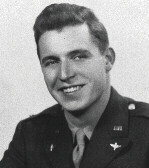
WORLD WAR II 1939-1945
World War II began in 1939 when Germany invaded Poland and the British Empire (Great Britain, Canada, Australia and New Zealand) declared War on Germany. The Germans, Italians and Japanese aligned to form the Axis and the members of the British Empire, the Russians and most of the other European countries were aligned as the Allies. Although the United States did not get involved until the Japanese attacked Pearl Harbor on December 7, 1941, America was supportive of the Allied effort and had been supplying weapons and other materials to them for some time. In early 1941 there was a feeling that the U.S. would soon be joining the Allies and many individuals joined the service before the U.S. became involved. The day after Pearl Harbor, the U.S. declared war on Japan and as a result the Germans declared war on the U.S. Of the 16,353,659 Americans who served during WWII, 62% or 10,110,114 were drafted.
The resulting war was divided into two major theaters of operation; the European and the Pacific. Troops from the British Empire and the U.S. fought on both fronts. The objective of the war was to stop the German dictator Adolph Hitler and his Japanese allies who were spreading their tyranny and oppression throughout the world. On June 6, 1944 the largest invasion of its kind in world history occurred when U.S., British and Canadian troops stormed the beaches in Normandy France. It was the turning point in the war in Europe. In the Pacific, the turning point was the battle of Iwo Jima fought during February and March 1945. The war in Europe ended on May 7, 1945 when Allied forces overran Germany and the Germans surrendered. The war in the Pacific continued for three more months until the Japanese surrendered on August 14, 1945 after American forces dropped the atomic bombs on Nagasaki and Hiroshima. The statistics below show the magnitude of the war on the combatants from the countries from which our ancestors and relatives came.
|
Country |
Peak Strength |
Combat Deaths |
|
U.S. |
12,300,000 |
292,131 |
|
Great Britain |
5,120,000 |
244,723 |
|
Canada |
780,000 |
37,476 |
|
Australia |
680,000 |
23,365 |
|
New Zealand |
157,000 |
10,033 |
61million military and civilian lives were lost during WWII. What follows is the story of ten men who served together during this conflict. Nine made the supreme sacrifice and one survived. Although only one of these men was a member of our extended Coulthart family, their story must be told together.
Capt. James K. Hunter (1922-1944)
James "Jim" Hunter was born on January 1,1922 on a farm near Waterford, Minnesota not far from Northfield. He was the oldest child of Laurence Hunter and Mary Hendricks and the great grandson of Jane Coulthart (1812-1892) and William Hunter of Northfield. Jim had two brothers and a sister: Michael (1923), Elizabeth (1925) and Laurence (1926). The family lived for awhile on the farm but later moved to Waterford where their father worked as an electric lineman. In school Jim was well liked and very popular. He was a good student; played football, participated in school plays, and sang in the choir. One year his mother was quite upset because he had not made the honor role. For the next six weeks Jim studied extremely hard and brought home a report card with all A's. He asked his mother if she was satisfied and when she replied "yes", he promptly informed her that it would be the last time he was going to work that hard! He graduated from Northfield High School in 1940 and obtained a job as a waiter.
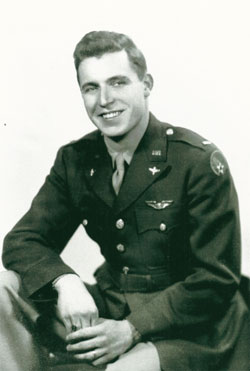
Jim enlisted on November 30, 1940 when the National Guard was activated and left home with the Northfield Headquarters, 68th Infantry Brigade. His basic training was held at Camp Clairborne, Louisiana after which he was assigned to Fort Dix, New Jersey. On December 7, 1941 the Japanese bombed Pearl Harbor and the U.S. declared war. Within weeks, Jim's infantry unit was assigned to report to the European Theater and was scheduled to ship out in early 1942. However, on January 7 his father passed away suddenly from a coronary at age 51. Jim was granted temporary leave and returned home. He helped his mother resettle in her hometown of Hastings, Minnesota which was only a few miles east of Waterford. When he returned to the service, he was transferred to the Army Air Corp. He had always wanted to fly and had completed the necessary paper work requesting the transfer many months earlier. Since his unit had already departed for Europe, the army reviewed his application and he was selected to attend officers training notwithstanding the fact that he only had a high school education.
As an Aviation Cadet Jim received three phases of training 1) Primary Training at Bennetsville, South Carolina from September through November 1942; 2) Basic Training at Cochran Field in Macon, Georgia from November 1942 until January 1943; and 3) Advanced Flying School at Turner Field in Albany, Georgia from January through March 1943. On March 24, 1943 Jim was honorably discharged as an Aviation Cadet and accepted a commission as a 2nd Lieutenent in the Army Air Forces Reserve. His discharge papers described him as 5 feet 11 inches tall with brown eyes, dark brown hair and a clear complexion. After a month of additional flight training at Alamogordo, New Mexico in April 1943, Jim was sent to Biggs Field in El Paso, Texas which became his home base from May through November 1943. While stationed in Texas, Jim met a young nurse from Ottawa, Illinois, Miss Hollis Brown and they fell in love. They were married in Denver, Colorado. From the time he became a 2nd lieutenent, Jim exclusively flew the B-24 Liberator, a four engine bomber. He attended Phase I Flight Training at Davis-Monthan Field in Tuscon, Arizona during October and November and completed Phase II and III Flight Training at Blythe, California from November 1943 through January 1944. On January 4, 1944, during his training at Blythe, he joined the crew as a pilot.
When phased training was complete, Jim was assigned to the 491st Bomber Group that had formed in Tucson, Arizona on September 22, 1943. The 491st was further divided into four squadrons, the 852nd, 853rd, 854th and 855th. The 491st was ordered to report to Pueblo, Colorado for final training. In Pueblo flight crews were assembled, assigned to aircraft and received intensive three-month training in which the men learned to work together as a team and depend upon each other. At the end of the training, each squadron consisted of 17 crews and their associated ground personnel. According to Jim's flight records, he flew a total of 691 hours during all of his training, 181 hours of this were as the first pilot. He remained in Pueblo from February through April 1944. At the conclusion of this training he was promoted to 1st Lieutenent.

Left: Jim with his first crew during training. Jim is the third from the left in the back row.
The crew of a B-24 bomber consisted of ten men. It took five men to navigate and fly the plane: pilot, co-pilot, navigator, flight engineer and radio operator; one bombardier to drop the bombs; and four gunners to protect the plane from enemy attack: nose gunner, right waist gunner, left waist gunner and tail gunner. The original members of crew #24 of the 854th squadron consisted of: Capt. James K. Hunter, age 22 - pilot from Hastings, Minnesota, Capt. Raymond Toll - co-pilot, Lt. Harry B. Parker - navigator from Salem, Oregon, T/Sgt Cecil E. Hudson - engineer and top turret gunner from Mesquite, Texas, T/Sgt Barto J. Montalbano - radio-operator from Brooklyn, New York, Lt. John R. Granat - bombardier from Portland, Oregon, Palmer - waist gunner, George M. Walburg - tail gunner, S/Sgt.James L. Evers - left waist gunner from Dadeville, Alabama and Frank DiPalma - ball turret gunner from Rochester, New York. The Consolidated B-24 Liberator was one of three heavy bombers used in WWII along with the B-17 Flying Fortress and the B-29 Superfortress. The B-29 was introduced late in the war and only flew in the Pacific, the most famous being the Enola Gay which dropped the atomic bomb on Hiroshima. Between 1942 and 1945, 18,000 B-24's were manufactured at assembly plants in Texas, Oklahoma and California. Some flight crews of the 491st personally traveled to San Diego to pick up their newly constructed B-24J planes that had just been completed on the assembly line. In the spring of 1944, the Hunter crew was assigned to a B-24J Liberator with serial number 44-40210 which arrived in Pueblo on March 31, 1944. They named her "I'll Be Seeing You" after the popular song of the time.
During his months in Colorado, Jim had several opportunities to return to Minnesota. One day he flew with some of his crew to St. Paul to pick up a part for the top secret 'Norden' bombsite which would allow their plane to perform high altitude precision bombing. Key parts for the bombsite were manufactured by companies throughout the U.S. and one component was produced by Honeywell. On the return to Colorado, Jim took the opportunity to "buzz" Hastings causing all of the windows in town to rattle. He had telephoned earlier in the day to let his mother know he would waggle his wings as he flew by. She was quite embarrassed by the incident and did not let anyone in town know that it was her son who caused all of the commotion. On Jim's last trip home before going overseas, he went with his mother to visit his sister, Beth, who was attending her first year of nursing school at St. Joseph's Hospital in St. Paul. No men were allowed on the third floor of the nurses quarters but his mother snuck him in and hid him in the closet to surprise Beth. Jim was a good-looking guy in his air force uniform and all of the nurses were just crazy about him.
In April 1944 the 68 original flight crews of the 491st Bomber Group were assigned to their final destination. To get there one gunner from each crew was required to sail with the ground crew while the other nine men were to fly with the plane. Frank DiPalma was selected to sail and he departed on April 11. When he left Pueblo no one knew whether they were headed to the European Theater or to the Pacific. The rest of the flight crew left between April 24-April 30. Frank was the first to arrive at their final destination on April 28. He had sailed from New Jersey to Glasgow, Scotland, then took the train to Metfield a small village in Suffolk County in eastern England. Jim and the rest of his crew reported to Palm Beach Florida where they were to receive their sealed flight orders. Secrecy was necessary as many U.S. troops were headed to Europe in preparation for D-Day which was to take place a few months later. The Hunter crew left Florida on May 9th and headed to Trinidad with strict orders not to open their sealed flight orders until they were one hour out. It was only then that they learned that their final destination was Metfield, England. To get there they would be taking the southern route to Europe via Brazil and Africa. This was necessary because planes at the time could not carry sufficient fuel to fly directly to England from the U.S. En route they stopped in places like Trinidad, Puerto Rico and British Guyana before making the long 2000 mile hop across the South Atlantic Ocean from Fortalaza or Natal, Brazil to Dakar, West Africa. From there they flew to Marrakesh, North Africa and then on to Lands End, England, flying over the ocean west of Europe to avoid the Germans in occupied France. The journey of over 10,000 miles took at least 62 hours of flying time. With layovers, the earliest planes arrived in Metfield on May 9th, making the trip in 12 days. According to Capt. Hunter's flight records, it took them 22 days as they arrived in Metfield on May 31.
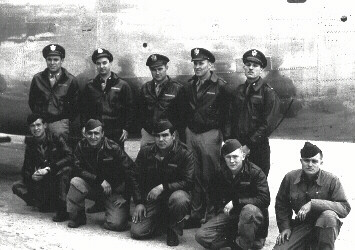
Left: The Hunter crew upon their arrival in England. Back row, left to right: Jim Hunter, Raymond Toll, Harry Parker, John Granat and Anthony Caputo (passenger). Front row, left to right: Cecil Hudson, Barto Montalbano, Palmer, George Walburg and James Evers. Not pictured: Frank DiPalma.
Between June 2, 1944 and April 25, 1945, the 491st flew 184 bombing missions, two supply missions and one mission where propaganda material was dropped. A typical mission consisted of an early morning briefing in which the men learned their destination and target. Later they would take off and assemble in their formations. Many bombing missions involved hundreds and sometimes thousands of planes from bases scattered throughout eastern and central England. Most involved both bombers and fighters of the 8th U.S. Army Air Force. Large bombers were difficult to maneuver and could easily become targets for German fighter planes. As a result the bombers were usually escorted to their target by fighter planes such as P-38 Lightnings, P-47 Thunderbolts and P-51 Mustangs. Sometimes due to the distances involved, the fighters could only escort the bombers part of the way. Another way in which the bombers protected themselves was to fly in a tight formation behind a lead plane. Each aircraft was separated by only a 30-60 second interval. When a large formation of bombers flew over head it was quite a site to see. Large formations were often spread out several miles in width and at least two or three times more in length. For most missions it took a significant amount of time for the planes to assemble in their formations and this was usually done over the English Channel. As a result, their activity was often picked up on German radar and the enemy had time to prepare for their arrival
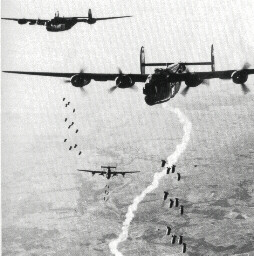 Normally the B-24's flew to their targets at a very high altitude. This required the men to wear oxygen masks and special flight suits to protect them from the extreme temperatures they encountered at that altitude. These temperatures often reached 40 degrees below zero. Once the bombers reached the target site they would often descend to a lower altitude in order to unload their deadly cargo. Each B-24 could carry up to twelve 500 pound bombs. They concentrated on military, industrial and transportation targets. The goal was to reduce the enemy's ability to wage war by destroying their capability to produce aircraft, weapons and other military products and to prevent them from delivering these products to the front lines. During WWII over 2,057,244 tons of bombs were dropped. From September 1, 1944 through April 24, 1945, the 491st dropped 12,235 tons of bombs on German targets. Each full crew flew an average of 20 missions dropping 48 tons of bombs. The damage inflicted upon their targets reduced the German war machine and, in combination with Allied ground forces ultimately lead to the end of the war. In the process 26,000 airmen were killed and many more were wounded. The 491st lost 493 men or 19% of their combat personnel.
Normally the B-24's flew to their targets at a very high altitude. This required the men to wear oxygen masks and special flight suits to protect them from the extreme temperatures they encountered at that altitude. These temperatures often reached 40 degrees below zero. Once the bombers reached the target site they would often descend to a lower altitude in order to unload their deadly cargo. Each B-24 could carry up to twelve 500 pound bombs. They concentrated on military, industrial and transportation targets. The goal was to reduce the enemy's ability to wage war by destroying their capability to produce aircraft, weapons and other military products and to prevent them from delivering these products to the front lines. During WWII over 2,057,244 tons of bombs were dropped. From September 1, 1944 through April 24, 1945, the 491st dropped 12,235 tons of bombs on German targets. Each full crew flew an average of 20 missions dropping 48 tons of bombs. The damage inflicted upon their targets reduced the German war machine and, in combination with Allied ground forces ultimately lead to the end of the war. In the process 26,000 airmen were killed and many more were wounded. The 491st lost 493 men or 19% of their combat personnel.
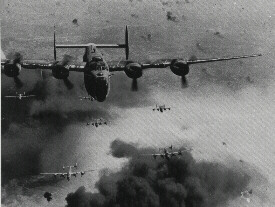 A typical mission would take anywhere from three to twelve hours. Assembling the formation could take several hours depending upon how many planes were involved. The actual flight time depended upon the location of the target. A mission to Holland and back would take 3 to 4 hours, to northern or central France 4 to 6 hours, to Berlin 8 hours, Munich would take 9 to 10 hours and one to Dresden would take 12 hours. Once the target site was reached, the bombers often had to circle several times if fog prevented the bombardier from properly sighting the target. If bombs were released too early, civilians would be killed unnecessarily. Once a plane broke formation, it was often subjected to intense enemy fighter attack and its chances for survival were diminished. As the bombers neared their target and descended, they were then subjected to enemy anti-aircraft fire, more commonly known as flak during WWII. Most flak appeared as small dark puffs of smoke in the sky through which the bombers had to fly. It consisted of a cartridge that exploded at a certain attitude and sent hundreds of small metal projectiles in all directions. Considerable damage was caused when these projectiles made contact with an airplane. Although many planes were damaged by flak, many were still able to fly due to the skill level of the pilots. Others were damaged so severely they were forced to bail out and many ditched in the English Channel on their return to England. On other occasions, the landing gear would not descend and the plane would have to crash land back at the home base. The 491st lost 88 aircraft during its tenure in England. 26 planes were lost to flak.
A typical mission would take anywhere from three to twelve hours. Assembling the formation could take several hours depending upon how many planes were involved. The actual flight time depended upon the location of the target. A mission to Holland and back would take 3 to 4 hours, to northern or central France 4 to 6 hours, to Berlin 8 hours, Munich would take 9 to 10 hours and one to Dresden would take 12 hours. Once the target site was reached, the bombers often had to circle several times if fog prevented the bombardier from properly sighting the target. If bombs were released too early, civilians would be killed unnecessarily. Once a plane broke formation, it was often subjected to intense enemy fighter attack and its chances for survival were diminished. As the bombers neared their target and descended, they were then subjected to enemy anti-aircraft fire, more commonly known as flak during WWII. Most flak appeared as small dark puffs of smoke in the sky through which the bombers had to fly. It consisted of a cartridge that exploded at a certain attitude and sent hundreds of small metal projectiles in all directions. Considerable damage was caused when these projectiles made contact with an airplane. Although many planes were damaged by flak, many were still able to fly due to the skill level of the pilots. Others were damaged so severely they were forced to bail out and many ditched in the English Channel on their return to England. On other occasions, the landing gear would not descend and the plane would have to crash land back at the home base. The 491st lost 88 aircraft during its tenure in England. 26 planes were lost to flak.
Life in England as the member of a bomber crew had its ups and downs. One day the crew would be in the quiet, peaceful English countryside riding their bikes to town, having a few beers at a local pub, attending dances in the evening sponsored by the Army or on R & R in London or Scotland. After 15 missions, all flight crews were given a week off for R & R. The next day they would be on a mission over Germany in the middle of heavy flak, unsure whether they would make it back safely. The 491st often engaged in training missions on the days they were not flying to targets in France or Germany. On several occasions, Jim was assigned to the crew of another B-24, the "Hot Rock", as the co-pilot. This was done to gain experience and prepare him to become a lead pilot. Sometime between August and early September, Jim was promoted to Captain and one of his friends, Harry Reynolds, from the "Hot Rock" pretended to polish his new bars with his elbow in celebration. Jim was known by his colleagues as a happy, easy going person who always had a smile on his face. Around the same time Jim received a letter from his wife and learned he was the proud father of a baby girl named Janet. At least five others in the Hunter crew were married as well and letters from home were something the men always looked forward to.
From June 2, 1944 to September 18, 1944, the 491st flew 71 missions. The exact number of missions flown by the Hunter crew is unknown, however, according to Capt. Hunter's flight records, they flew at least 21 missions (see chart below) and clocked an additional 338 hours of flying time. Most of the original crews flew between 20 to 30 missions from their arrival in England until the middle of September. Several had already flown the required number of 30 missions after which they were allowed to return to the States. The first mission of the 491st was an airfield at Bretigney, France, 18 miles south of Paris. Several days later, during the Normandy Invasion, they were sent to knock out the town of Coutances in order to assist the ground forces in establishing a beachhead. They did not unload their cargo that day but returned to England with a full load. The weather had prevented them from making visual contact with the target and they did not want to drop their bombs on the Allied forces on the ground. Weather frequently hampered their missions. The most common targets involved bombing airports, railroad bridges, V-1 Buzz Bomb launching sites also called no ball sites, railroad marshalling yards, aircraft assembly plants and oil refineries. Some of the destinations were places in Germany like Munich, Bremen, Ludwigshafen, Hannover, Karlsruhe and Ulm. During one of the early missions, a plane returned with a full load and tried to belly land at Metfield because the landing gear would not retract. As soon as the plane touched the ground it exploded in a giant fireball and all ten crewmembers were killed instantly. There were other deadly incidents on the ground as well. In preparation for one mission, an excited gunner walked into the rotating propellers of a plane's engine. On July 15, the ammo dump where they stored their bombs exploded and several men were killed. As a result, the 491st was moved in early August to North Pickenham, a base located about 30 miles northwest of Metfield in Norfolk County.
|
Hunter Crew Missions |
||||
|
# |
Date |
491st Mission |
Location |
Target |
|
1 |
June 2, 1944 |
1 |
Bretigney, France |
Airfield |
|
2 |
June 7, 1944 |
6 |
Laigle, France |
Bridge |
|
3 |
June 14, 1944 |
13 |
Eindhoven, Holland |
Airfield |
|
4 |
June 17, 1944 |
16 |
Angers, France |
Airfield |
|
5 |
June 19, 1944 |
18 |
Watten, France |
No ball site |
|
6 |
June 19, 1944 |
19 |
Conche D'Eques, France |
No ball site |
|
7 |
June 20, 1944 |
20 |
No ball sites on coast of France |
No ball site |
|
8 |
June 22, 1944 |
23 |
Beauvoir, France |
No ball site |
|
9 |
June 25, 1944 |
27 |
Villacoblay, France |
Airfield |
|
10 |
July 4, 1944 |
30 |
Evreux, Conchas, France |
Airfield |
|
11 |
July 7, 1944 |
32 |
Oschersleben, Germany |
Aircraft plant |
|
12 |
July 8, 1944 |
33 |
Nanteuil, France |
Bridge |
|
13 |
July 19, 1944 |
37 |
Sindelfigen, Germany |
Airfield |
|
14 |
July 21, 1944 |
39 |
Kempten, Germany |
Marshalling yards |
|
15 |
July 29, 1944 |
43 |
Bremen, Germany |
Oil refinery |
|
16 |
Aug. 6, 1944 |
50 |
Schulau, Germany |
Oil storage area |
|
17 |
Aug. 12, 1944 |
55 |
Laon Athies, France |
Airfield |
|
18 |
Aug. 24, 1944 |
59 |
Hannover, Germany |
Airfield |
|
19 |
Aug. 27, 1944 |
62 |
Oranienburg, Germany |
Aircraft factory |
|
20 |
Sept. 13, 1944 |
70 |
Schwabish Hall, Germany |
Airfield |
|
21 |
Sept. 18, 1944 |
71 |
Eindhoven, Holland |
Market Garden support |
For four days prior to September 18, 1944, the 491st stood down, meaning they were not required to fly any missions. Instead they were asked to practice flying at low altitudes as close to the ground as possible. They were preparing for a special mission in which they would be required to fly in at tree top level and drop supplies to Allies forces on the ground. As the 18th approached, the 491st learned they were to play a role in the first major offensive since D-Day. The operation was called "Market Garden". It was a joint Allied effort planned by British Field Marshall Montgomery in which Allied forces would be dropped behind the German lines in an attempt to push the Germans out of Holland. Operation Market Garden would involve 3,634 aircraft, 1,635 gliders, 30,481 troops, 1,001 vehicles, 463 artillery weapons and 3,559 tons of equipment which would be dropped or landed in Holland. If all went according to plan, these forces would within days be joined by the existing ground troops to the south in Belgium and would together drive the Germans east across the Rhine River. During the training many pilots and their crews thought the mission would be what they called a 'milk run', slang for an easy target. Market Garden would go down in history as the Battle of Arnhem - A Bridge Too Far. It was the largest airborne battle in history and the only Allied defeat in the campaign in North-West Europe.
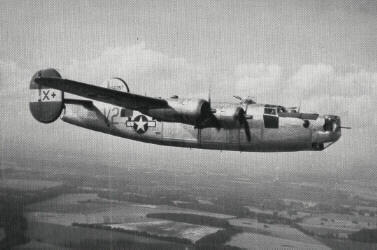 Market Garden began on September 17 when 875 B-17 bombers were dispatched to bomb 117 flak batteries and installations in the Netherlands. They were followed by the First Allied Airborne Army making a parachute and glider drop of 20,000 troops in 2,083 aircraft. Since the transport planes were unarmed, they were escorted by 503 American and 371 British fighters. This sky train stretched for 94 miles in length and three miles in breadth flying at an average height of 1,500 feet. Once over their target in Holland, they descended to 500 feet for the drop. Paratroopers from the 101st U.S. Airborne were dropped north of Eindhoven, the 82nd U.S. Airborne were dropped south of Nijmegen and the 1st British Airborne were dropped near Arnhem. The average time over German anti-aircraft positions was about 40 minutes. Another airlift involving 2,458 transport planes escorted by 867 fighters, took place on September 18th when the second group of men and supplies were dropped in Holland. Immediately following this second drop, 248 B-24's from the 8th U.S. Air Force dropped resupply to the 101st and 82nd Airborne Divisions. Forty of these B-24's came from the 491st. Instead of carrying bombs, their bomb bays were filled with medical supplies, communication equipment, ammunition, food and fuel. It was the first time that heavy bombers were used to drop supplies at low-level.
Market Garden began on September 17 when 875 B-17 bombers were dispatched to bomb 117 flak batteries and installations in the Netherlands. They were followed by the First Allied Airborne Army making a parachute and glider drop of 20,000 troops in 2,083 aircraft. Since the transport planes were unarmed, they were escorted by 503 American and 371 British fighters. This sky train stretched for 94 miles in length and three miles in breadth flying at an average height of 1,500 feet. Once over their target in Holland, they descended to 500 feet for the drop. Paratroopers from the 101st U.S. Airborne were dropped north of Eindhoven, the 82nd U.S. Airborne were dropped south of Nijmegen and the 1st British Airborne were dropped near Arnhem. The average time over German anti-aircraft positions was about 40 minutes. Another airlift involving 2,458 transport planes escorted by 867 fighters, took place on September 18th when the second group of men and supplies were dropped in Holland. Immediately following this second drop, 248 B-24's from the 8th U.S. Air Force dropped resupply to the 101st and 82nd Airborne Divisions. Forty of these B-24's came from the 491st. Instead of carrying bombs, their bomb bays were filled with medical supplies, communication equipment, ammunition, food and fuel. It was the first time that heavy bombers were used to drop supplies at low-level.
On the morning of September 18th, the briefing for mission 71 was held at 9:30 a.m at North Pickenham. The Hunter crew was selected to lead part of the group to Veghel, Holland to drop supplies to the 101st Airborne. As the lead plane, one of the groups Operations Officers was required to fly as the co-pilot and several men wanted the position. The final decision was made by the flip of a coin and Captain Anthony Mitchell of Poland, Ohio replaced Lt. Raymond Toll as the co-pilot. A drop master to supervise the dropping of supplies by parachute was required as well and PFC George E. Parrish from Durham, North Carolina was temporarily assigned to the Hunter crew. Two members of the original crew, Palmer and Walburg, did not make the flight, possibly due to illness or injury. Nose gunner, 1st Lt. William H. Byrne from Bellmore, New York, was added instead. Byrne normally flew on "The Hard Way" as the navigator with the David Hicks crew. However, because of the practice of not having a navigator on every plane of every mission, Lt. Byrne was behind in his missions. The rest of the Hicks crew had finished their 31 missions on September 11, 1944 and were scheduled to return home shortly.
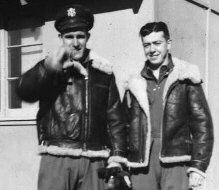 Left: 1st Lt. Byrne (on right) with 1st Lt. Hicks in Blythe, California during training.
Left: 1st Lt. Byrne (on right) with 1st Lt. Hicks in Blythe, California during training.
After a delay due to fog, take off and assembly finally began at 1:27 p.m and they left the British coast at 2:53 for the 34-minute flight to Holland. During the trip they were required to make a 360 degree turn to avoid the returning troop carriers of the second airlift. When they reached the Dutch coast at 3:56 p.m. they descended to 300 feet and immediately caught small arms fire. Within 15 minutes they were flying at tree top level, 150 feet above the ground and could see Dutch citizens cheering and waving at them. From the time they arrived over Holland until they reached their target, they were also subjected to intense German anti-aircraft fire. They had been instructed not to return fire to avoid hitting Dutch civilians. At approximately 4:30 p.m. they arrived at the drop zone and had to pull up to 400 feet in order to drop their bundles, most of which fell within the assigned areas. Then they began their journey home.
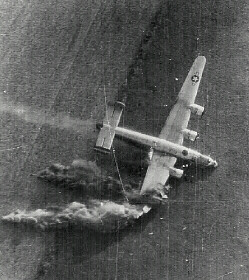 Within a few minutes the lead plane was hit by flak and a small fire started on the right wing. "With only seconds in which to work, Captain Hunter, considered one of the best pilots in the group, picked his spot and started to bring the B-24 in on its belly. At less than 50 feet, however, the right inboard engine burst into flames. The right wing dropped and was too low when the plane hit. The instant was captured by a camera in another aircraft." The plane then slid on the ground, crashed into a haystack and exploded. It came to rest in a field about three fourths of a mile northeast of a train overpass near the town of Udenhout, Holland. They were the unfortunate victims of a 20mm flak gun, which had been mounted by the Germans the day before in the town of Oisterwijk. On September 18, forty-two rounds were fired from this gun at the American planes as they flew overhead on their return to England. The heat from the explosion was so intense that a neighboring farmhouse caught fire. Because of the low altitude, no one was able to bail out. The rest of the 491st returned to North Pickenham where a missing in action report was filed on the Hunter crew and their families were notified. The mission was not the 'milk run' many thought it would be. A second plane was forced down in Belgium and five others crash-landed in England upon their return. The 491st lost 7 planes on September 18, 1944, the most in a single mission since their arrival in England.
Within a few minutes the lead plane was hit by flak and a small fire started on the right wing. "With only seconds in which to work, Captain Hunter, considered one of the best pilots in the group, picked his spot and started to bring the B-24 in on its belly. At less than 50 feet, however, the right inboard engine burst into flames. The right wing dropped and was too low when the plane hit. The instant was captured by a camera in another aircraft." The plane then slid on the ground, crashed into a haystack and exploded. It came to rest in a field about three fourths of a mile northeast of a train overpass near the town of Udenhout, Holland. They were the unfortunate victims of a 20mm flak gun, which had been mounted by the Germans the day before in the town of Oisterwijk. On September 18, forty-two rounds were fired from this gun at the American planes as they flew overhead on their return to England. The heat from the explosion was so intense that a neighboring farmhouse caught fire. Because of the low altitude, no one was able to bail out. The rest of the 491st returned to North Pickenham where a missing in action report was filed on the Hunter crew and their families were notified. The mission was not the 'milk run' many thought it would be. A second plane was forced down in Belgium and five others crash-landed in England upon their return. The 491st lost 7 planes on September 18, 1944, the most in a single mission since their arrival in England.
A few minutes after the crash several Dutch civilians in the area found a young man who was seriously burned wandering along the road trying to find a place to hide. They transported him to an institution for mentally disabled boys and men run by the St. Francis of Assisi order that was located near the crash site. Here he was hidden in the basement and taken care of by local doctors. After the fire was extinguished, a Dutch farmer transported the other nine bodies by horse driven cart to the cemetery at the village of Biezenmortel where they were buried. When the Germans investigated the crash on September 20, they stopped at the institution to question the Dutch. During the interrogation, one of the doctors pulled a gun and demanded they leave, insisting that the children were too traumatized by war to see another uniformed soldier. As a result the Germans left, never discovering that an American was hidden in the basement.
Frank DiPalma's family considered him a pretty lucky fellow. He was born Francisco DiPalma on June 19, 1919 in Moiano, Italy near the city of Sorrento. Frank was the youngest son of Joseph DiPalma and Concetta DiMartino. He had one brother and three sisters: Ralph (1913), Virginia (1921), Josephine (1928) and RoseMary (1932). During Frank's early years in Italy, he accidentally fell into a fire and was miraculously pulled to safety without so much as a scratch. His father immigrated to the U.S. in 1921 at the height of the anti-immigration movement. After Joseph became a citizen, it took him six years to convince the authorities to allow the rest of the family to immigrate. They were finally reunited on Ellis Island in 1927. After settling in Rochester, New York in the 1930's, Frank sold vacuum cleaners to farmers in the area to help supplement the family's income. One day while making the rounds with four other salesmen, the car in which they were riding was in an accident and the man next to him was killed. Again Frank walked away without a scratch. He enlisted in the air force in 1941 as he had always wanted to become a pilot. Like many new immigrants, he felt an obligation to his new country. He trained for several months then crash landed one day and ran into a fence causing significant damage to the plane. This time he walked away with a few scratches. Needless to say this ended his dream of becoming a pilot. Instead, due to his size, he trained as a ball turret gunner and was assigned to the Hunter crew during his final training in Colorado. After arriving in England, the ball turrets were removed from the B-24's of the 491st and he assumed the position of left waist gunner.
Frank remained unconscious for two weeks and after he awoke, had no memory of the crash or his early days in Holland. He was severely burned on the face, hands and legs. When Udenhout was finally liberated by Canadians attached to the British Army on October 26, he was transported to a hospital in Belgium and from there to Oxford, England where he remained for six months. He would spend the next two years in Valley Forge Veterans Hospital in Pennsylvania where he underwent numerous skin grafts. In 1948 he returned to his hometown in Rochester and married Lydia Iabone. They remained in the area and had three children: David, Karen and Janet. Frank pursued a career as a steam fitter at the Rochester Gas & Electric Company. He passed away on August 29, 1989 at the age of 70.
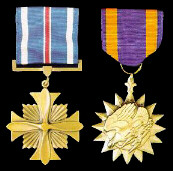 On December 26, 1944, the day after Christmas, Mrs. Hunter of Hastings, Minnesota received a telegram from the War Department indicating her son Jim had been killed in action over Holland on September 18. He had previously been reported as missing in action. Three days before the war ended in Europe, on May 4, 1945 at a ceremony at the Hastings courthouse, she was presented with the Distinguished Flying Cross and the Air Medal with one Oak Leaf Cluster awarded posthumously to her son. Capt. Hunter had received his first Air Medal on June 25, 1944. The citation accompanying the Distinguished Flying Cross stated: "For extraordinary achievement while serving as Lead Pilot on many missions over enemy and enemy occupied territory. The outstanding airmanship and skillful leadership demonstrated by Captain Hunter have been major factors in the success of each of these missions. In the face of intense ground defenses and adverse weather conditions, Captain Hunter led his Group to drop successfully vitally needed supplies after which his aircraft was seen to crash and burn. The devotion to duty, determination and tenacity of purpose displayed by Captain Hunter on this occasion reflect the highest credit upon himself and the Armed Forces of the United States". The Air Medal citation read in part: "For meritorious achievement in accomplishing with distinction several aerial operational missions over enemy occupied Continental Europe. The courage, coolness and skill displayed by this individual in the face of determined opposition, materially aided in the successful completion of these missions. His actions reflect great credit upon himself and the Armed Forces of the United States".
On December 26, 1944, the day after Christmas, Mrs. Hunter of Hastings, Minnesota received a telegram from the War Department indicating her son Jim had been killed in action over Holland on September 18. He had previously been reported as missing in action. Three days before the war ended in Europe, on May 4, 1945 at a ceremony at the Hastings courthouse, she was presented with the Distinguished Flying Cross and the Air Medal with one Oak Leaf Cluster awarded posthumously to her son. Capt. Hunter had received his first Air Medal on June 25, 1944. The citation accompanying the Distinguished Flying Cross stated: "For extraordinary achievement while serving as Lead Pilot on many missions over enemy and enemy occupied territory. The outstanding airmanship and skillful leadership demonstrated by Captain Hunter have been major factors in the success of each of these missions. In the face of intense ground defenses and adverse weather conditions, Captain Hunter led his Group to drop successfully vitally needed supplies after which his aircraft was seen to crash and burn. The devotion to duty, determination and tenacity of purpose displayed by Captain Hunter on this occasion reflect the highest credit upon himself and the Armed Forces of the United States". The Air Medal citation read in part: "For meritorious achievement in accomplishing with distinction several aerial operational missions over enemy occupied Continental Europe. The courage, coolness and skill displayed by this individual in the face of determined opposition, materially aided in the successful completion of these missions. His actions reflect great credit upon himself and the Armed Forces of the United States".
Several months after the war ended in 1945 the remains of the nine crew members buried in Biezenmortel were exhumed. Three were returned to the U.S. at the request of their families to be buried in their hometowns. Jim and five of his crew were re-interred at the American Military Cemetery in Margraten, Holland along with 8,295 other Americans, most of whom lost their lives nearby. Captain James Hunter can be found in section D row 21 grave 7. His family had considered bringing him home but changed their minds after they heard the story of a young Dutch girl who adopted his grave. Every Sunday she would ride her bicycle fifteen miles from her home to the cemetery to place flowers on Jim's grave. On September 18, 1996 the Dutch citizens from the town of Udenhout dedicated a memorial at the local church to the men who were killed there 52 years earlier. To this day these nine men and Frank DiPalma are considered their liberators.
Below: The Netherlands American Military Cemetery and Memorial in Margraten, Holland and Terry Meinke placing a flag and rose on Capt. Hunter's grave on September 25, 2012.
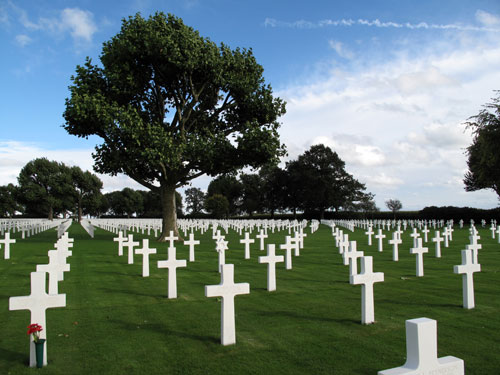
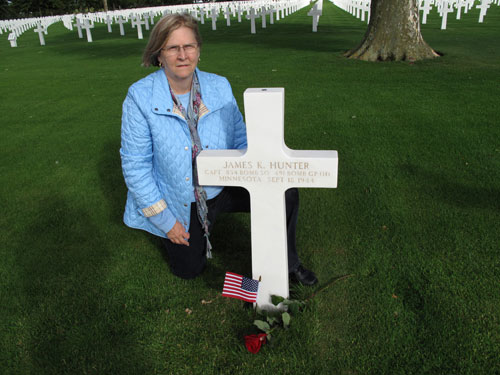
Other Crew Members
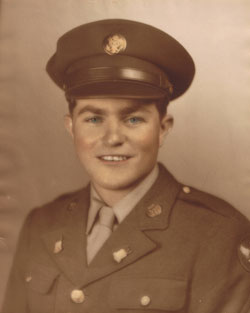 S/Sgt. James Lester Evers
S/Sgt. James Lester Evers
James Lester Evers was born May 22, 1923 in the Eagle Creek community of Tallapoosa County, Alabama.
James Lester graduated from Tallapoosa County High School in Dadeville, Alabama in 1941 and then was admitted to Auburn University and was
studying engineering before he enlisted (June 2015: information and photograph submitted by Charles Evers of Birmingham, Alabama, nephew of S/Sgt. Evers).
In memory of Jim and his crew:
I'll be seeing you
In all the old, familiar places
That this heart of mine embraces
All day through.
In that small cafe
The park across the way
The children's carousel
The chestnut tree
The wishing well.
I'll be seeing you
In every lovely, summer's day
And everything that's bright and gay
I'll always think of you that way
I'll find you in the morning sun
And when the night is new
I'll be looking at the moon
But I'll be seeing you.
Music written by Sammy Fain, lyrics by Irving Kahal
Bibliography
- 18 september 1996 onthulling herdenkingsplaquette gemeente Udenhout by Paul Pouwels - memorial brochure
- "The B-24 Liberator" by Allan Blue
- Amercian Battle Monuments Commission website - www.usabmc.com/ne.htm
- "American Eagles - The History of the United States Air Force" by Dan Patterson
- "Arnhem 1944 Operation 'Market Garden' - Campaign Series 24" by Stephen Badsey
- "The Heros Next Door - Bombers Followed When Troops Went - A Bridge To Far", Halifax magazine, July 1999.
- "Capt. James Hunter Reported Killed In Action In Holland" Hastings Newspaper - Hastings, Minnesota December 29, 1944
- "Consolidated B-24 Liberator" by John and Donna Campbell
- "James Hunter Killed in Action Over Holland" Northfield News, Northfield, Minnesota January 4, 1945
- "The Mighty Eight" by Gerald Astor
- "Mother Receives Award Made Posthumously To Capt. James K. Hunter" Northfield News, Northfield, Minnesota May 24, 1945
- National Archives - Washington, DC. Missing Air Crew Report and German Reports of Crashed American Aircraft.
- Obituary in the Ottawa, Illinois newspaper
- "Ringmasters - A History of the 491st Bombardment Group (H) Part I and II" by Allan Blue
- The Ringmasters - History of the 491st Bombardment Group
- Smithsonian Magazine, June 1986 letter to the editor from Al Blue
- Smithsonian Magazine, April 1986 "Archaeology with a heart in Holland's drained inland sea".
- "Son of Local Woman Remembered - Holland Town Reflects Kindred Spirit of Freedom" Hastings newspaper, Hastings, Minnesota March 20, 1956
- United States Airforce Museum in Dayton, Ohio - Memorial Park and the 8th Airforce memorial
- United States Army Air Forces Combat Chronology 1941-1945 at www.lts.aetc.af.mil/ho_www/combat.html
- Al Blue - Historian of the 491st Bomber Group (via email)
- Anthony Caputo - Ft. Myers beach, Florida who flew with the 491st BG. 854th BS and flew overseas with the Hunter crew
- Ralph DiPalma - Rochester, New York (brother of Frank DiPalma)
- RoseMary (DiPalma) Fazio - Rochester, New York (sister of Frank DiPalma)
- Bruce Hicks - son of 1st Lt. David E. Hicks, for providing information and photo of 1st Lt. William Byrne. The Hicks crew was also part of the 854th BS. (via email)
- Larry Hunter - Hastings, Minnesota (brother of Capt. Hunter)
- Beth (nee Hunter) Kane - Hastings, Minnesota (sister of Capt. Hunter)
- Janet (nee Hunter) Raffinelli, Port Townsend, Washington, including obituaries and her father's military records (daughter of Capt. Hunter).
- Harry Reynolds - Daytona Beach, Florida who flew with the 491th BG, 855th BS including his flight logs and diary from Sept. 18, 1944
- Jack Unverferth who flew with the 491th BG, 854th BS (via email with his son Craig).